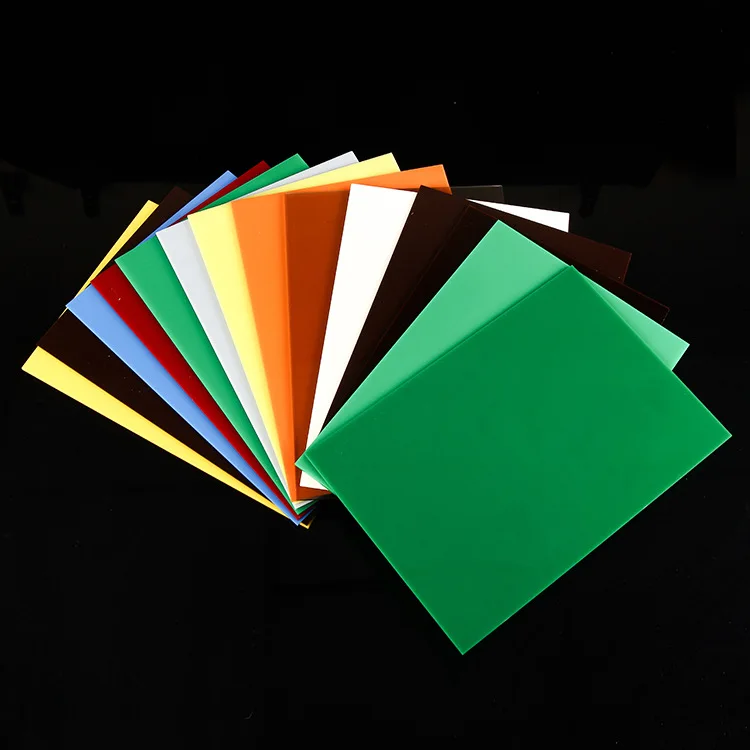アクリルシートの選択と準備
アクリルシートは、ガラスの破損に強い透明プラスチックの代替品であるため、さまざまなDIYプロジェクト、商業サイン、ホームデコレーション、家具デザインに使用できます。しかし、数千のサイズや品質がある多くの種類が初めての買い手を圧倒します。このガイドでは、アクリルシートを購入する旅を簡略化し、無知のために品質を失うことなく正しい購入ができるようお手伝いします。
厚さ、透明度、耐久性とは
アクリルシートの厚さは、その強度や柔軟性に大きな違いをもたらし、どのような用途に最適かを決定します。薄いシート(1/8インチから1/4インチ)は、写真フレーム、軽量ドア、またはフロストガラス効果に適しています(現地で素材のサンプルを確認してください)。一方、厚いパネルは看板には良いですが、テーブルトップやドアのインサートとしては耐久性が低いです。厚いシート(1/4インチから1インチ)は、テーブルトップ、シャワーエンクロージャー、または強度と剛性が必要な屋外パネルとしてより一般的に使用されます。しかし、透明度が重要です——時間とともに黄色く変色しないプレミアムグレードのアクリルを選んでください。
耐久性と長寿命の両面において、アクリルは他のポリマーに比べてUV光に強く、退色や破損を防ぎます。日光や過酷な条件下で使用される構造物は、屋外設置用に特別に設計されていない限り、時間が経つにつれて劣化します。使用される材料が変形したり、色が変わったり、もしくは硬く脆くなったりすることがあります。これは製造中に適切にUV安定剤で処理されていない場合です。
品質を sacrificering することなくアクリルシートのお得な取り引きを見つける方法
信頼できるサプライヤーとの取引で、オンラインまたは対面で最高の価格を見つけましょう。品質を損なわずに、オンラインでの購入時には送料を追加することをお忘れなく。サプライヤーのメーリングリストやソーシャルメディアページも、在庫一掃セールでの大幅割引情報を得る手段の一つです。プロジェクトで小さな部品が許される場合、端材や残り布を安価で購入することでコストを削減することもできますが、素材の強度は保たれます。
DIY用かプロ用か?プロジェクトに適したアクリル板の仕様を見分ける方法
プロジェクトの複雑さや目指す仕上げによって、標準、押出成型、または鋳造アクリルのいずれがその作業に適しているかが通常は明確になります。鋳造アクリルは工場出荷時のエッジがよりクリアで、水族館や医療機器など繊細なデザインやプロフェッショナル用途に適しています。押出成型アクリルは鋳造アクリルほど透明ではありませんが、DIYプロジェクトや大量生産に役立つ形に切りやすく加工できます。選択する前に、スキルレベル、精度、予算を考慮してください。
5つの簡単なステップでアクリル板をプロのようにカットして扱う方法
1. 二度測って一度切る:
正確な測定が必要であるため、精密さが重要です。ストレートエッジとファインチップマーカーを使用して、このカットラインを作成します。
2. 安全対策:
怪我やアクリルへの指紋を防ぐために、必ず安全ゴーグルと手袋を着用してください。
3. 印をつけ、折る:
特殊なアクリルカッターや信頼できるユーティリティナイフで印をつけた線に沿って切り目を入れます。均一な圧力をかけ、複数回行うことできれいな切り目を作ります。次に、切り目に入れた部分をゆっくりと曲げ、一方の側に圧力をかけながら、もう片方の端をまっすぐな辺に沿わせておき、反対の手でしっかりと引くことで、一気に余分な材料を折り取ります。
4. 端を滑らかにする:
細かいグリットのサンドペーパーを使用して、切り目の端を滑らかにします。
アクリルシートの耐久性と傷防止のためのメンテナンス方法
アクリルのお手入れ方法アクリルは非常に簡単なお手入れで効果的にケアすることができます。
・掃除:
ぬるま湯に軽い石鹸をつけた布でふき取ります。絶対に研磨剤入りの洗剤やこすり具を使用しないでください。
・磨き:
時々、アクリルに安全なポリッシュを選ぶことができます。光沢のある仕上がりを好む場合に適しています。
- 取り扱い:
引っ張るのではなく持ち上げることで、アクリルシートに傷がつくのを防ぎます。
- 保管:
変形を防ぐために水平または垂直に保管し、ほこりや傷から保護するために柔らかい布で覆ってください。
アクリルシートを選択し、管理し、手入れするための主要なポイントについて学んだ後は、最初の小さなDIYプロジェクトからプロレベルの設置まで作業を開始する準備が整いました。上記の方法は、さまざまな創造的な用途に美しい、長持ちする、手頃な解決策を提供します。

 EN
EN











































 オンライン
オンライン